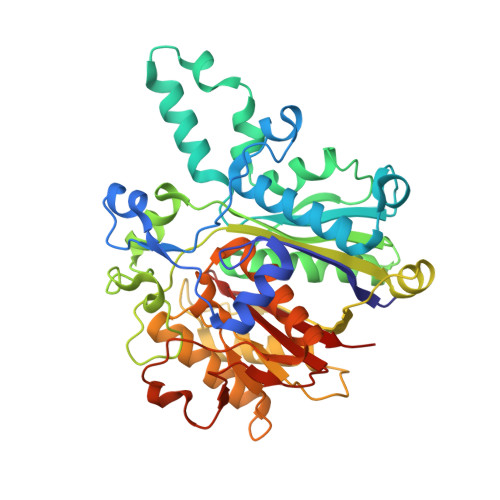Identification and analysis of the acyl carrier protein (ACP) docking site on beta-ketoacyl-ACP synthase III.
Zhang, Y.M., Rao, M.S., Heath, R.J., Price, A.C., Olson, A.J., Rock, C.O., White, S.W.(2001) J Biological Chem 276: 8231-8238
- PubMed: 11078736
- DOI: https://doi.org/10.1074/jbc.M008042200
- Primary Citation of Related Structures:
1G5X - PubMed Abstract:
The molecular details that govern the specific interactions between acyl carrier protein (ACP) and the enzymes of fatty acid biosynthesis are unknown. We investigated the mechanism of ACP-protein interactions using a computational analysis to dock the NMR structure of ACP with the crystal structure of beta-ketoacyl-ACP synthase III (FabH) and experimentally tested the model by the biochemical analysis of FabH mutants. The activities of the mutants were assessed using both an ACP-dependent and an ACP-independent assay. The ACP interaction surface was defined by mutations that compromised FabH activity in the ACP-dependent assay but had no effect in the ACP-independent assay. ACP docked to a positively charged/hydrophobic patch adjacent to the active site tunnel on FabH, which included a conserved arginine (Arg-249) that was required for ACP docking. Kinetic analysis and direct binding studies between FabH and ACP confirmed the identification of Arg-249 as critical for FabH-ACP interaction. Our experiments reveal the significance of the positively charged/hydrophobic patch located adjacent to the active site cavities of the fatty acid biosynthesis enzymes and the high degree of sequence conservation in helix II of ACP across species.
- Department of Biochemistry, St. Jude Children's Research Hospital, Memphis, Tennessee 38105, USA.
Organizational Affiliation:
















